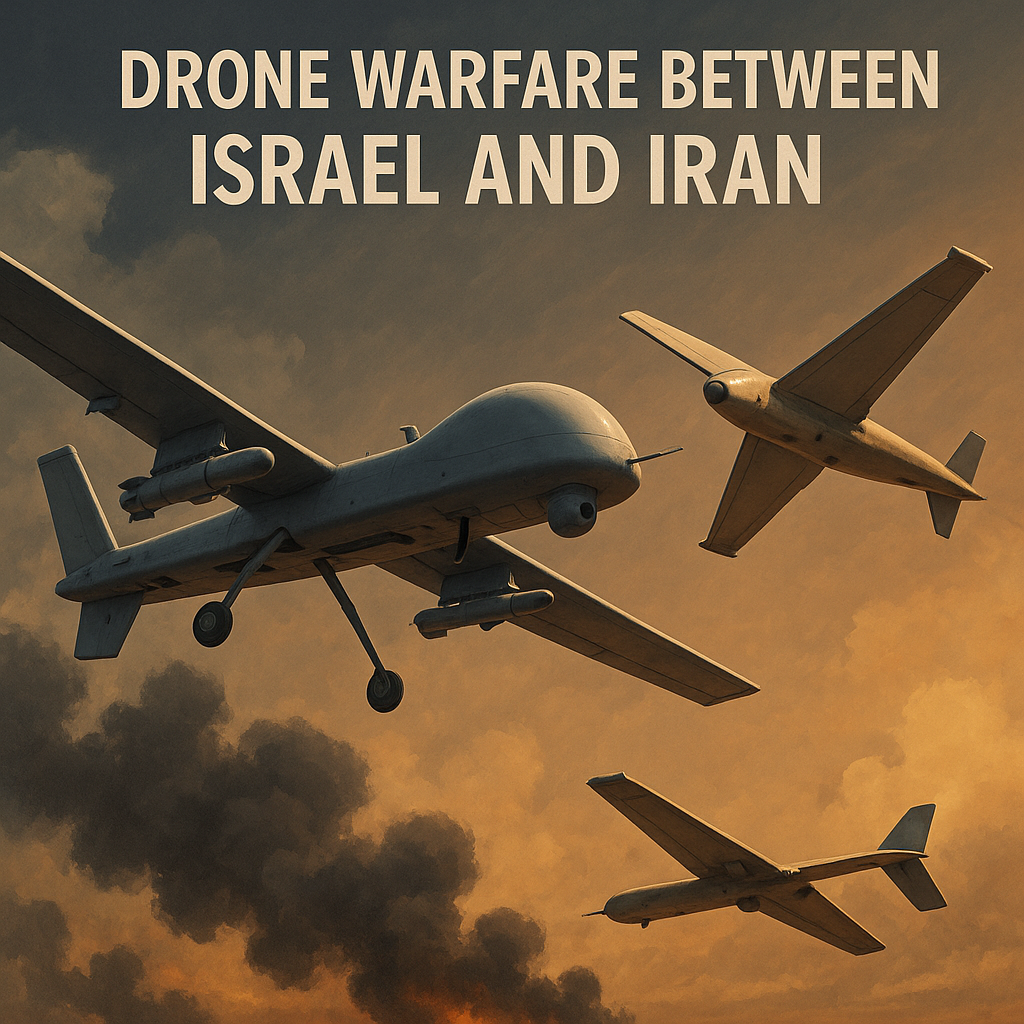War has always evolved with technology—from swords to guns, tanks to jets. But now, the battlefield has moved skyward and silent. Welcome to the drone warfare between Israel and Iran, where AI, autonomous UAVs, and deadly swarms are changing the rules of combat.
In this blog, we’re going to break it all down—from Iran’s budget-friendly Shahed drones to Israel’s AI-powered IDF drones—and how this could reshape global military power.
🔥 What Is Drone Warfare Between Israel and Iran Really About?
At first glance, it may seem like another chapter in the long, tense history of the Middle East. But this time, there’s a twist: the battles aren’t just on the ground or through traditional airstrikes. They’re automated, AI-guided, and often invisible to the human eye.
The current drone warfare between Israel and Iran is less about sheer firepower and more about intelligence, automation, and rapid response. These flying machines aren’t just delivering payloads—they’re collecting data, tracking targets, and even making decisions in the air.
🛩️ Inside Iran’s Shahed Drone Arsenal
Iran has gained global attention for its Shahed-series drones, especially the Shahed-136 and Shahed-129.
These drones aren’t high-tech masterpieces. In fact, they’re known for being low-cost, easily assembled, and surprisingly effective. But that’s exactly what makes them dangerous.
So, what do Shahed drones bring to the table?
- Loitering capability: They fly around waiting for a target—like a flying landmine.
- Swarm attacks: Launching dozens at once to confuse and overpower defenses.
- Long-range targeting: Capable of traveling hundreds of kilometers.
- Low radar visibility: Their size and flight style make them hard to detect.
You may have already seen these in action—used by Russia in Ukraine, Hezbollah in Lebanon, and in recent drone attacks across Israeli borders.
📎 Related: Shahed-136 explained – DefenseOne
🧠 Israel’s AI-Driven IDF Drones: Smart, Fast, Deadly
While Iran floods the sky with numbers, Israel strikes back with brainpower. The IDF (Israel Defense Forces) is known for its technological edge, and when it comes to drones, they’re leading the charge.
Israeli drones like the Hermes 900 and Harop loitering munition aren’t just flying machines—they’re AI-powered soldiers.
Key features of IDF drones:
- AI-based targeting: Drones can detect enemy assets using machine learning.
- Autonomous navigation: Minimal human control, maximum efficiency.
- Precision strikes: High accuracy, even in densely populated areas.
- Real-time data sharing: Drones communicate with each other during missions.
This is not sci-fi anymore. These drones can hunt targets, update data mid-flight, and even collaborate in swarm formations.
🤖 Autonomous Drones: The Rise of Machine Warfare
Let’s talk about what really sets this conflict apart: autonomous drones. These aren’t just remote-controlled machines—they can think, learn, and act without human input.
Imagine this:
A drone takes off, identifies an enemy vehicle, analyzes whether it’s a military threat, decides it is, and takes it out—without a human ever touching a joystick.
That’s the future of drone warfare between Israel and Iran. And it’s happening now.
This technology raises important questions:
- Who’s responsible if the drone makes a mistake?
- Can AI distinguish between a civilian and a combatant?
- Is autonomous warfare ethical?
But whether we like it or not, autonomous drones are here to stay—and both sides are investing heavily.
🌍 The Global Impact of Israel-Iran Drone Warfare
Why should the world care about this specific conflict?
Because this isn’t just regional tension—it’s a testing ground for next-gen military tech.
Countries like the USA, Russia, China, Turkey, and India are watching closely. The tactics, tech, and outcomes of this drone war could shape their own military strategies for the next decade.
Key takeaways for the global defense community:
- Drones are cheaper than manned aircraft.
- They reduce human risk.
- They gather intelligence as they attack.
- They can fight 24/7 with no rest.
In short: drones are efficient, lethal, and scalable. And this conflict is setting the bar.
⚔️ What Happens Next?
The tension between Israel and Iran is unlikely to fade soon. And with every new drone deployed, the technology advances further.
We may soon see:
- Drone dogfights: UAVs taking down enemy drones mid-air.
- AI vs AI combat: Competing systems trying to out-think each other.
- Cyber warfare integrated into drone missions: Hacking enemy drones mid-flight.
The future of warfare isn’t about who has more tanks—it’s about who has smarter code.
🧩 Final Thoughts: The Drone War Is Just Beginning
The drone warfare between Israel and Iran is more than just explosions on a map—it’s a signpost pointing toward the future of all military conflict.
Iran’s Shahed UAVs show how cheap, mass-produced drones can still wreak havoc. Israel’s AI-based targeting proves that intelligence and software are now as important as firepower.
This war is writing the playbook for tomorrow’s battlefield.
And in that battlefield, the winner may not be the one with the most soldiers…
…but the one with the smartest drones.

